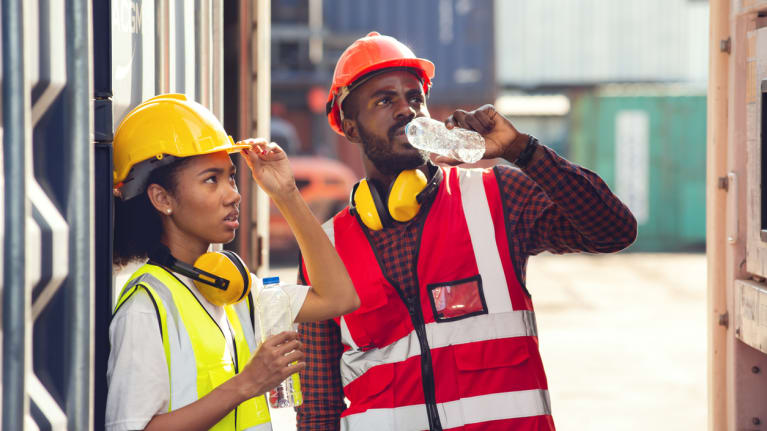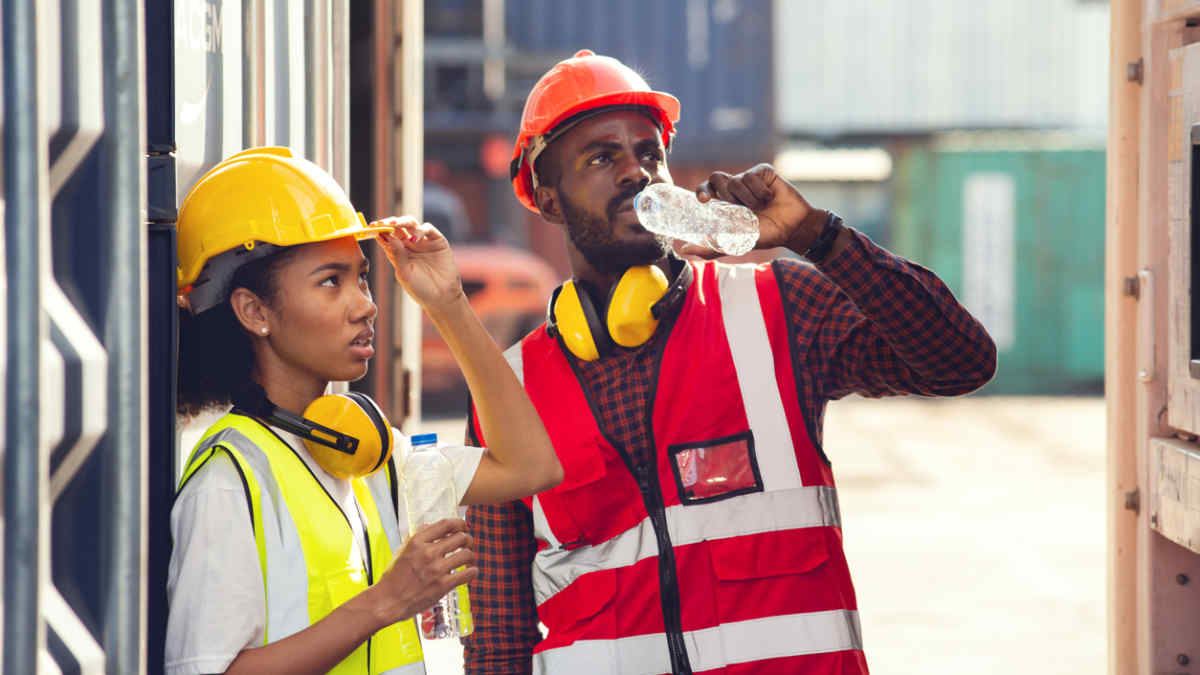

There’s a growing momentum to establish federal standards to prevent heat illness in the workplace, as temperatures hit record levels in many parts of the U.S. and Europe.
President Joe Biden outlined steps the federal government will take to protect workers, including ramping up safety inspections and enforcement in industries that have a high risk of heat hazards. He appeared in a press conference with the mayors of Phoenix, Ariz., and San Antonio, Texas, on July 27 to highlight measures to address the recent heat waves caused by global climate change.
“Construction workers literally risk their lives working all day in blazing heat, and in some places [they] don’t even have the right to take a water break. That is outrageous,” Biden said. “We should be protecting workers from hazardous conditions, and we will.”
“The No. 1 weather-related killer is heat,” he said. “Even those places that are used to extreme heat have never seen it as hot as it is now for as long as it’s been.” He reminded Americans to recognize the signs of heat stroke, like headache, nausea and dizziness.
Phoenix Mayor Kate Gallego said, “This summer has been unprecedented. It’s taking a real toll on our community.”
The federal government launched a new website with interactive maps, weather forecasts and tips for keeping cool amid record-breaking heat.
We gathered a set of articles on the news from SHRM Online and other trusted news sources.
Federal Hazard Alert
Biden asked the U.S. Department of Labor (DOL) to issue the first-ever hazard alert for heat, affirming that workers have heat-related protections under federal law. The DOL will provide information on what employers can and should do to protect workers, and the agency will expand enforcement of heat-safety violations, particularly in construction and agriculture. The Occupational Safety and Health Administration (OSHA) continues work to develop a comprehensive national standard for workplace heat-safety rules.
Farmworkers, farmers, firefighters, and construction workers are disproportionately impacted by extreme heat, and more than 400 workers have died due to heat exposure at work since 2011, according to a White House fact sheet.
Federal and State Rules
There’s no federal standard for outdoor workers exposed to extreme heat yet, meaning it’s up to states and their labor departments to issue workplace mandates.
Three states—California, Minnesota and Oregon—have permanent statewide heat standards in place. Washington state implemented emergency heat protections, with its labor department still drafting permanent regulations. Yet similar bills in Florida, New York and Nevada haven’t passed in recent years.
In February, attorneys general in New York, California, Illinois, Maryland, Massachusetts, New Jersey and Pennsylvania sent a letter to Douglas Parker, who leads OSHA, urging the implementation of an emergency temporary heat standard—citing how climate change is “spurring longer, more intense, and more frequent heat waves” that are harmful to workers’ health. Parker said OSHA is working to finalize a rule on heat-illness prevention in the workplace, which he called a top priority.
On July 24, more than 100 members of Congress signed a letter to the DOL, calling for federal regulations requiring employers to provide adequate hydration, rest breaks in shaded areas and medical services to address heat-related symptoms.
Dozens of workers and labor organizers gathered on July 25 in Washington, D.C. to call on OSHA to swiftly implement a nationwide workplace heat standard. The eight-hour protest—representing the time of a typical work shift—was led by U.S. Rep. Greg Casar, D-Texas, who refused to drink water during that time in an effort to highlight the lack of protections for workers during extreme heat waves.
Federal Agencies Address Heat
The National Oceanic and Atmospheric Administration will invest up to $7 million to improve weather forecasts to allow communities to better prepare for extreme weather, the White House said.
The U.S. Department of the Interior is investing $152 million to expand water storage and improve climate resilience in California, Colorado and Washington.
(NBC News)
Florida and Texas Pre-empt Local Heat Standards
Florida and Texas recently enacted laws to ensure that state law pre-empts city and county ordinances, including workplace health and safety rules. This will make it easier for employers and individuals to challenge local ordinances in court. For example, in Dallas and Austin, Texas, construction workers are entitled to a 10-minute rest break for every four hours worked in order to prevent heat illness. Texas state law doesn’t require rest breaks.
On July 27, San Antonio Mayor Ron Nirenberg said, “Texas cities are in a battle with the state for local control. We’re going to do everything we can to protect our most vulnerable workers, particularly outdoor workers.” Houston has sued Texas over the pre-emption law.
The Texas AFL-CIO, a group of labor unions, expressed concerns about worker safety, stating, “Banning required rest breaks for construction workers in the Texas heat is deadly.” It called attention to a utility lineman who died of heat stroke in Texas recently.
Pervasive Heat Waves
Biden’s plans represent part of his broader effort to address the immediate effects of climate change. Nearly 40 percent of the U.S. population faces heat advisories, according to the National Weather Service. It’s a worldwide problem, and scientists calculate that July will be the hottest month on record.
OSHA fined a Florida farm supervisor last month for exposing workers to excessive heat after a worker from Mexico died at a farm in Parkland, Fla. Investigators determined the worker’s death could have been prevented if a labor contractor had followed established safety practices regarding heat-related hazards.

